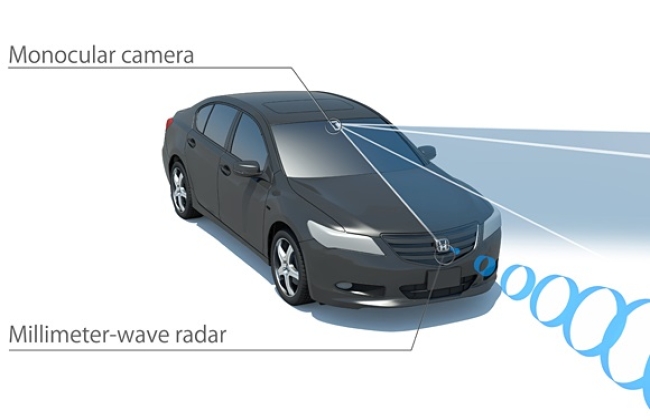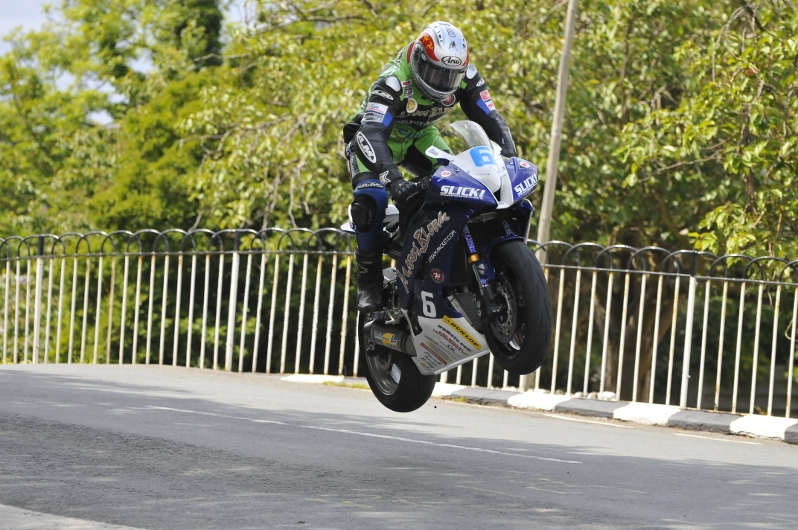Taking a brake
How do you feel about safety technology on your machine?
There is an interesting development creeping into the modern world by stealth. It is the machines taking over to make us safer theme I am talking about here, it would be hard not to have noticed this. Every day it seems, we hear about a new feature added to our cars and motorcycles aimed at preventing accidents.
Playing safe
Here are a few examples of what’s increasingly on offer today in the way of new safety technology:
Honda, a lead player in this game, is currently bringing in ‘Honda sensing’ which will be put into all new Honda Legends on sale in Japan by the end of this year. Basically it is another technology aimed at collision free driving. It uses sensors in the car – one is a millimeter wave radar inside the front grille of the car, the other is a monocular camera mounted on the upper inside part of the windscreen - to scan the environment around the driver for possible hazards.
The car has six new safety functions in total, such as the
“Pedestrian Collision Mitigation Steering System" (apparently the world’s first). You have probably gathered that its job is to spot pedestrians who you might be in danger of hitting! If the radar detects a pedestrian the car will warn the driver and if the driver does not respond, the car will turn the steering wheel the other way to avoid the impact.
The system now recognizes not only its surroundings, but also the intentions of the driver and conditions of the vehicle, and applies ‘collaborative control’ over certain components of the vehicle including the braking system and steering wheel. Its ‘collision mitigation braking system’ in a nutshell means that if you are likely to have a crash the car starts to tell you with audio and visual warnings and if you don’t take any notice it gently starts to brake and if you still don’t take any notice it brakes fully itself to reduce speed and hopefully impact.
Living on the edge
The system's monocular camera is also set to detect lane boundaries and if you start to stray from the true path it will tell you, then apply ‘corrective steering’ all by itself if you ignore it.
The sensors also detect the car in front and controls your acceleration and braking so that the appropriate stopping distance is maintained and the on board camera can detect traffic signs as well and displays them to the driver... There is more but you probably get it now, basically the car watches everything and anticipates anything which might happen. When it spots any hazard it tells the driver and if the driver fails to react it takes over and does the required manouever itself.
Well I never.
Steady as she goes
This is one heading in the same direction but for motorcycles. Robert Bosch LLC has developed a Motorcycle Stability Control system or MSC. The German firm began supplying MSC in late 2013, here’s an idea of how it works. The system has a lean angle sensor to constantly measure wheel speed, yaw rate, lean angle and pitch angle in order to modulate braking and acceleration. It kicks in when the rider applies either the front or rear brake, automatically modulating braking force according to speed and the rate of lean. It can even detect when the front or rear wheel is about to lift, thus automatically applying corrective action. The idea being that if the motorcyclist has misjudged the corner, the sensor kicks in and corrects the braking.
Here is what Bosch says about the new system: The technical basis of the MSC is the ABS enhanced system, which Bosch engineers have now expanded to include an extensive array of sensors and software.
This system offers motorcyclists a range of safety functions:
*
The lean and pitch angle-dependent ABS control improves riding stability in all riding situations as well as braking effectiveness.
*The traction control regulates the maximum engine torque so that even on variable or slippery road surfaces, the driving force is efficiently transferred to the road and the drive wheel does not lose its grip.
* When braking heavily in curves, the MSC reduces the motorcycle's tendency to return to an upright position. This involuntary righting of the machine leads to a larger cornering radius, which often results in the motorcycle leaving its lane. In these situations, the eCBS electronic combined brake system creates the best possible distribution of brake force between the wheels, and thus stabilizes the bike during cornering.
* The MSC also reduces the risk of "lowsiders". These are accidents in which the motorcycle capsizes during cornering and the wheels slide out toward the outside of the bend. They occur when too much brake force is applied during cornering and the wheels are not able to transfer sufficient side force onto the road. MSC counteracts this by detecting the risk of a lowsider and limiting the maximum brake force. The eCBS function distributes this maximum available brake force between the wheels, ensuring the best possible brake performance under cornering conditions.
* The CBS function ensures optimum distribution of brake force at all times - even when the biker mistakenly uses only one of the two brakes, or brakes with too much force.
* The wheelie-mitigation controls the engine torque, preventing the front wheel from lifting uncontrollably and at the same time ensuring maximum acceleration.
* The rear-wheel lift-up mitigation function keeps the rear wheel on the road by reducing the maximum brake force on the front wheel when riding on surfaces with high friction coefficients. Riding stability is maintained, taking pitch rate and longitudinal acceleration into account.
Plenty of food for thought there...
Baby you can drive my car
The ultimate in driverless technology is also on its way - here is a story we did in 2012 about a fully
driverless car - to take the pesky human out of the equation altogether and many companies are currently working on the same thing.
There are countless other safety innovations coming on stream all the time. One might even be tempted to think that they will eventually come as standard on all vehicles and then it will, in the end be illegal to drive or ride without them.
What do you think? Do you want your braking corrected by your bike when you are going round a corner? Is this something which we approve of, as it will hopefully save lives, or do you prefer to be self correcting?
Let us know what you think
[email protected]




